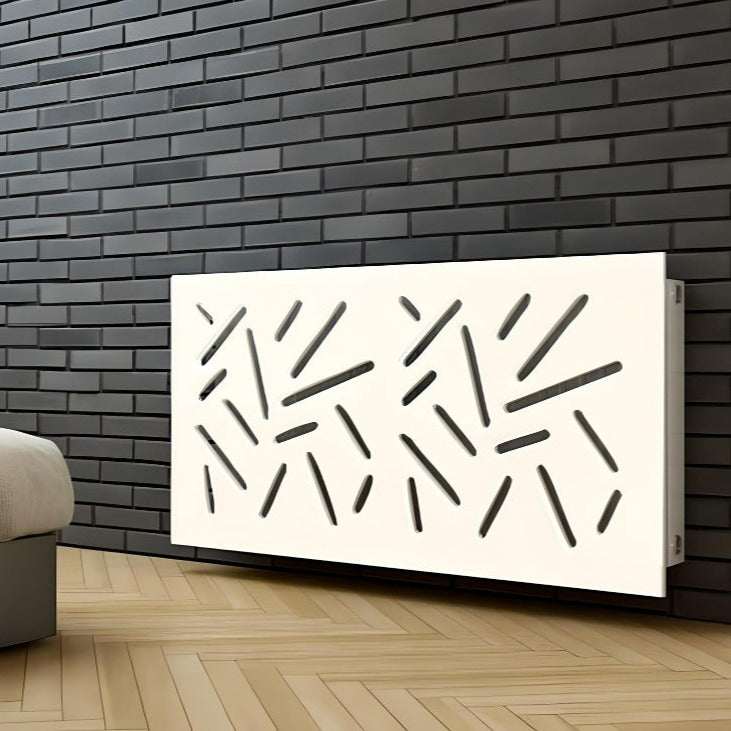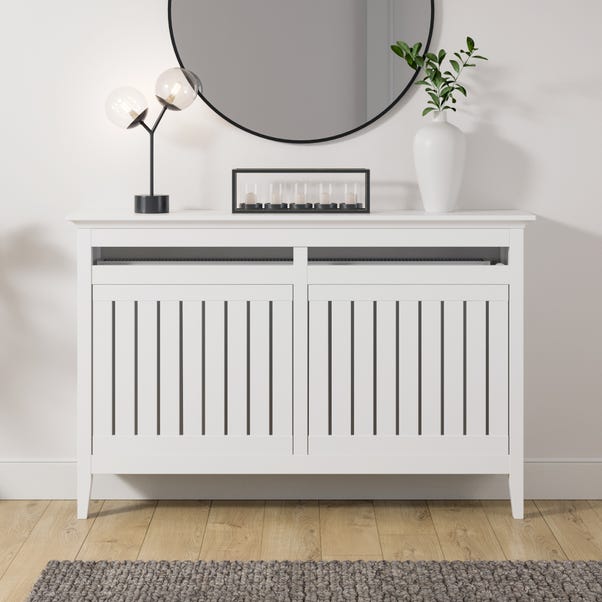Radiator Cover Solutions for Small and Big Rooms
Radiator Cover Solutions for Small and Big Rooms
Blog Article
Radiator Covers: Understanding Materials, Layouts, and Advantages
Radiator covers serve both practical and visual objectives within a home, using a variety of products such as mdf, wood, and metal to match different design preferences. As styles evolveâEUR" from conventional to contemporaryâEUR" these covers not just enhance the aesthetic allure of an area but likewise add to safety and energy performance. However, choosing the right radiator cover entails comprehending the nuances of materials, designs, and their connected benefits. This expedition elevates crucial questions about how these elements integrate right into your living setting and what factors to consider ought to guide your selection process.
Sorts Of Products


Wood covers, commonly crafted from woods such as oak or maple, supply a traditional, cozy appearance that enhances traditional interiors. Their sturdiness and capacity to be stained or painted add to their flexibility. Steel covers, generally made from steel or light weight aluminum, are preferred for their toughness and modern-day look, typically including sleek lines that boost modern areas.
MDF, a produced wood item, is prominent for its cost-effectiveness and convenience of customization. It can be painted or finished to match existing style while offering a smooth surface area. Plastic covers, while less typical, are lightweight and resistant to dampness, making them ideal for damp settings.
Eventually, the choice of material for a radiator cover ought to align with the home owner's style preferences, practical needs, and the particular setting where the cover will be installed. Each material offers a distinct character, guaranteeing that there is an option to suit every taste and setup.
Popular Style Styles
Emphasizing visual appeal, popular design styles for radiator covers reflect a variety of preferences and indoor layout trends. Traditional styles typically feature complex woodwork and luxuriant detailing, making them suitable for timeless or vintage-inspired interiors. These covers commonly integrate carved aspects, offering a warm and welcoming feeling to any type of space.
In comparison, modern layouts concentrate on minimalist looks, identified by tidy lines and understated style. Products such as steel or sleek timber with a smooth coating are typically used, allowing these covers to mix seamlessly into modern rooms. Industrial designs, on the various other hand, welcome basic materials like revealed metal and concrete, adding a vibrant statement to loft space or urban settings.
For those looking for a distinct touch, bespoke styles supply customization alternatives that deal with private choices, enabling house owners to select shades, patterns, and materials that match their style. Furthermore, farmhouse-style covers integrate rustic elements, including distressed timber and easy kinds that evoke a cozy, nation charm.
Benefits of Radiator Covers
Radiator covers not just boost the aesthetic appeal of a room however also use several functional benefits that make them a rewarding enhancement to any kind of home. Among the main advantages is security, especially in houses with children or pets. Covers lower the danger of burns from warm radiator surface areas, ensuring a safer environment.
In addition, radiator covers can enhance energy efficiency. By guiding heat right into the room as opposed to permitting it to leave, they help keep a regular temperature, reducing home heating costs over time. This is specifically valuable in older homes where radiator systems may be much less effective.
Another significant benefit is sound reduction. Radiators can sometimes generate undesirable noises during operation, and covers can assist smother these noises, adding to an extra peaceful space. Additionally, radiator covers can be functional, providing extra storage or display screen room, consequently taking full advantage of the energy of often-overlooked locations.
Lastly, they can protect radiators from dust Going Here and particles, which can hinder effectiveness and rise maintenance requirements. With these incorporated advantages, radiator covers become a functional solution for improving both the capability and design of any home environment.
Installation Considerations
Mounting radiator covers needs careful factor to consider to make certain both performance and safety and security (Radiator cover). Assess the measurements of your radiator and the surrounding area to guarantee an appropriate fit. Exact dimensions are essential; an ill-fitting cover can block warm circulation or produce safety and security hazards
Following, review the material of the cover. While wood uses visual charm, metal choices may supply much better longevity and warm resistance. Think about the weight of the cover too; heavier covers might call for added support or reinforcements to prevent sagging or damage with time.
Ventilation is an additional critical element. Covers should include sufficient air movement to avoid getting too hot and maintain efficient home heating. Look for designs with slats or perforations that enable warm to distribute without obstruction.
Furthermore, ensure that the cover is safely mounted to stop mishaps, specifically in homes with children or animals. Radiator cover. It's recommended to adhere to the maker's installment guidelines carefully and, if needed, seek advice from an expert for complex installments
Maintenance and Care Tips
Appropriate maintenance of radiator covers is vital for ensuring their long life and optimum efficiency. For repainted click over here or wood covers, think about a suitable gloss or safety finish to maintain their look.
Check the covers regularly for indicators of wear or damage, such as cracks or peeling off paint. Addressing these issues quickly can protect against further degeneration. Guarantee that the covers are firmly fastened and check for any loose screws or installations, as resonances from the radiator can loosen them with time.
In cooler months, avoid positioning hefty things or ornamental items on top of the radiator covers, as this can hinder heat distribution and cause unneeded anxiety to the structure. Think about seasonal maintenance by removing the covers for extensive cleaning and examination during warmer months when the heating system is inactive. Adopting these basic care tips will enhance the performance and visual appeal of your radiator covers, guaranteeing they offer their purpose successfully for many years to come.

Conclusion
In recap, radiator covers serve as practical and aesthetic enhancements to household rooms. The varied series of materials, including hardwoods, mdf, plastic, and metal, enables for alignment with various layout styles such as standard, modern, commercial, and farmhouse. The advantages of these covers prolong beyond safety and energy effectiveness to include added storage and dust security. Careful factor to consider of installment and maintenance further makes certain the longevity and performance of radiator covers in any type of home environment.
Radiator covers serve both visual and functional objectives within a home, offering a variety of materials such as mdf, metal, and wood to fit numerous layout choices. Picking the ideal radiator cover includes recognizing Get the facts the subtleties of materials, styles, and their linked advantages.Stressing visual allure, preferred design styles for radiator covers reflect a variety of preferences and indoor layout trends.Radiator covers not just boost the visual allure of an area but likewise provide numerous practical advantages that make them a beneficial addition to any type of home. Consider the weight of the cover as well; heavier covers may call for additional assistance or supports to prevent drooping or damages over time.
Report this page